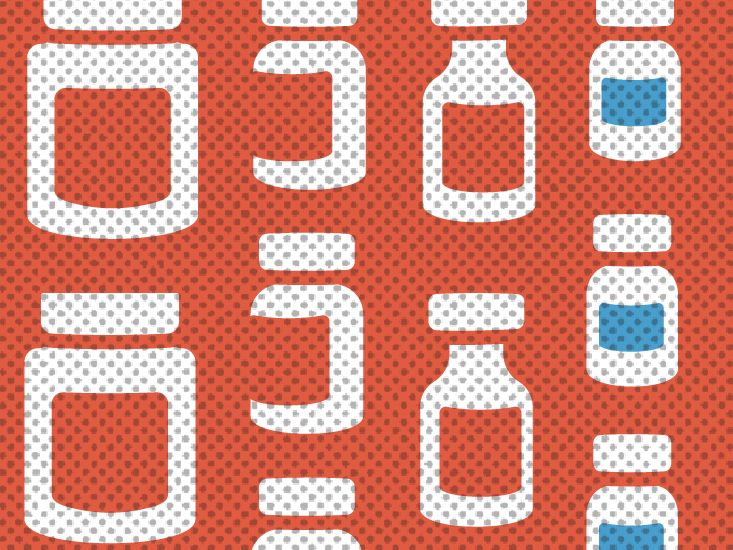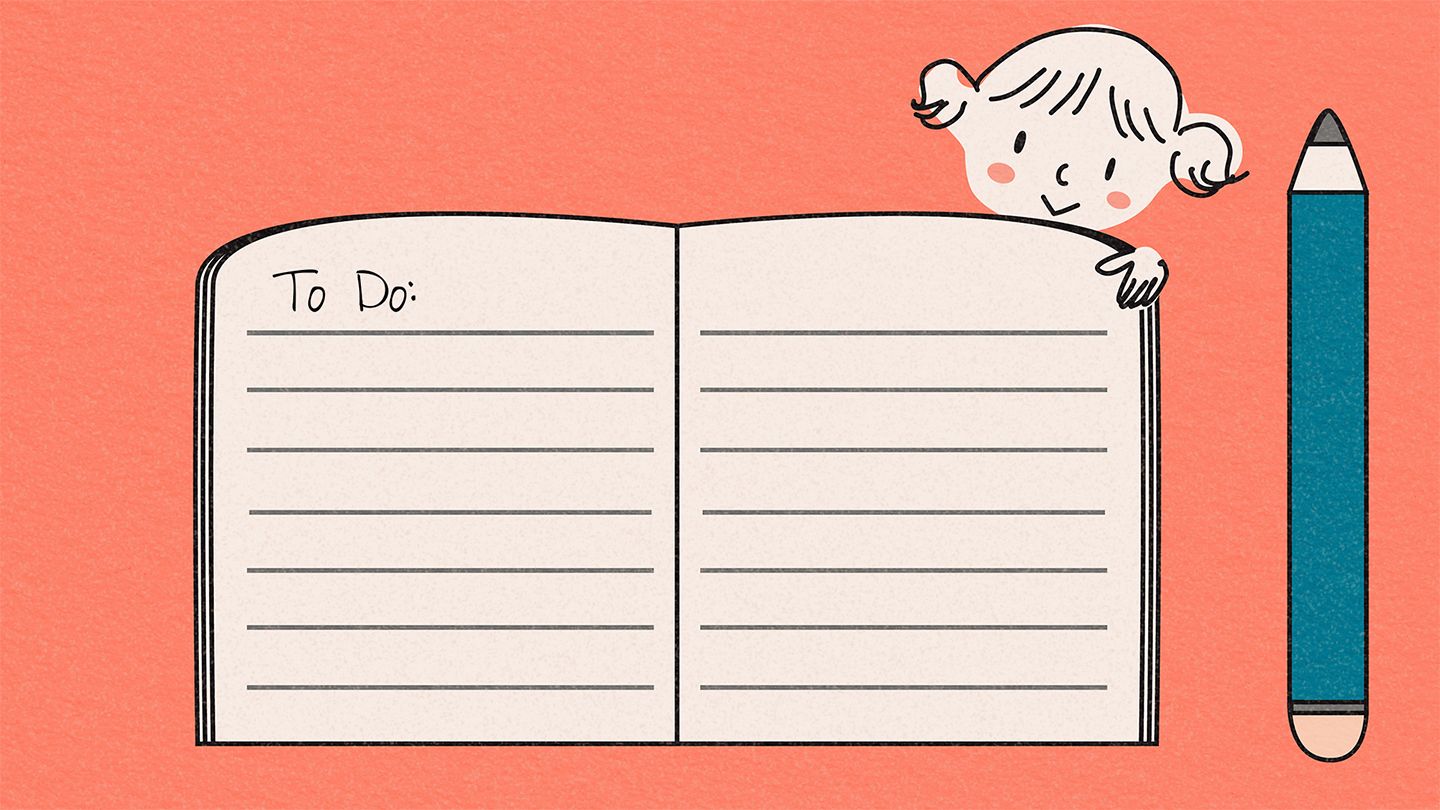If you're wondering, "Do I need an Adult ADHD test?"you're not alone. So many smart, capable adults reach a point where late emails, lost keys, and brain fog stop feeling "quirky" and start feeling exhausting. Here's the short version: start with a quick, evidence-based screening like the Adult ADHD Self-Report Scale (ASRS). It's fast, free, and helps you spot patterns that might suggest a fuller ADHD assessment is worth your time.
In this guide, I'll walk you through how the Adult ADHD test works, what your score means (and doesn't), common ADHD symptoms in adults, and what to do next. We'll keep it human, practical, and free of jargon. Grab a cup of something warm, and let's make sense of thistogether.
What it is
When people say "Adult ADHD test," they usually mean one of two things: a quick screening tool you can take yourself, or a complete, clinician-led ADHD assessment. Both matterbut they're not the same.
ADHD screening vs ADHD diagnosiswhat's the difference?
An ADHD screening is a short questionnaire that helps you see whether your experience matches common ADHD patterns. The ASRS (Adult ADHD Self-Report Scale) is the most widely used. It's a doorway, not the whole house.
An ADHD diagnosis, on the other hand, comes from a licensed clinician. It involves a detailed interview, history since childhood, examples of impairment in at least two areas of life (like work and home), and ruling out other causes. Think of it as connecting dots over timenot just scoring a quiz.
Quick view: Self-screeners, full assessment, comorbidity checks
Self-screeners: ASRS v1.1 (6-item screener + 18-item checklist) and ASRS DSM-5 versions are common and validated. They're easy to take and a great first step.
Full clinical assessment: A clinician reviews your history, daily impact, records when available, and often collects collateral input from someone who knows you well.
Comorbidity checks: Anxiety, depression, sleep disorders, trauma, substance use, thyroid issuesthese can mimic or mask ADHD. Good assessments look at the whole picture.
When should you screenand when to see a clinician first?
Screen when you have persistent focus, organization, or impulsivity challenges that have stuck around for 6 months or more and show up in more than one area of life. A screener can help you sort signal from noise.
Red flags that merit direct clinical care
If you're experiencing severe mood symptoms, thoughts of self-harm, possible bipolar symptoms (periods of very high energy and reduced sleep), heavy substance use, or sudden cognitive changes, skip the self-test and talk to a clinician first. Safety first, always.
ASRS basics
The Adult ADHD Self-Report Scale (ASRS) is a quick, research-backed way to screen for ADHD symptoms. Many clinicians use it because it's simple, sensitive, and gives a shared language to describe what you're experiencing.
What the ASRS measures and why clinicians use it
The ASRS maps to the core ADHD domains: inattention and hyperactivity/impulsivity. It doesn't diagnose you; it flags patterns that often show up in adults with ADHD. It's popular because it's brief and aligns with diagnostic criteria used by clinicians.
Format, time to complete, scoring ranges, and interpretation
Format: You'll answer how often you experience specific symptoms (Never to Very Often) over the past six months. There's a 6-item screener and a full 18-item checklist.
Time: 35 minutes for the screener; about 57 for the full version.
Scoring: The 6-item screener counts "Often" and "Very Often" responses on key items. A certain threshold suggests a positive screen. The 18-item version provides a broader view.
Interpretation: A positive screen means "this is worth a closer look." A negative screen means "ADHD is less likely," though not impossible.
Step-by-step: taking the ASRS accurately
1) Use a six-month lens: Answer based on your typical experience over the past half-yearnot just a tough week.
2) Consider two settings: Work/school and home. If your answers only reflect one setting, you might under- or overestimate impairment.
3) Ask for perspective: A partner, friend, or colleague can often spot patterns you've normalized.
4) Be honest: You're not trying to "pass" or "fail." You're trying to understand yourself.
Tips to avoid bias
Check your context: Are you in a crisis, or is this your normal baseline? Jot a note about sleep, stress, or big life changes that could skew results.
Think practical impact: If a symptom shows up "often," ask how it affects deadlines, bills, relationships, or safety.
What your ASRS result means (and doesn't)
Positive screen: It means ADHD is possible and a full ADHD assessment may be helpful. It does not mean you "have ADHD."
Negative screen: ADHD is less likely, but not ruled outespecially if you've developed strong coping strategies or if certain symptoms are masked by anxiety or perfectionism.
False positives and negatives; next steps
False positives can happen if burnout, anxiety, trauma, or sleep deprivation is driving symptoms. False negatives can happen when people minimize struggles or compensate heavily. Either way, if you're struggling, talk to a clinician. The goal isn't a label; it's better functioning and relief.
Adult signs
ADHD symptoms in adults often look subtler than in kids. Less "bouncing off walls," more "mind feels like 37 tabs openand one's playing music, but I can't find it." Sound familiar?
Inattention signs that impact daily life
At work, you might miss deadlines, struggle to start boring tasks, or switch tasks mid-stream so often that nothing gets finished. At home, there's the classic forgetfulness: appointments, birthdays, laundry in the washeragain. Time blindness can mean underestimating how long things take or getting lost in hyperfocus and missing dinner.
Examples you might recognize
Starting a simple email and ending up reorganizing your desktop folders for 45 minutes.
Re-reading the same page and still not absorbing it.
Paying a late fee on a bill you had the money forjust not the working memory for.
Hyperactivity/impulsivity in adults
Hyperactivity in adults is often internal. Think restlessness, fast talking, interrupting without meaning to, or buying things on impulse when emotions run high. It can show up as "go-go-go" energy until you crash.
Real-world snapshots
You're on a Zoom call, but your leg is bouncing, your mind ping-pongs, and you accidentally talk over people.
You say "Yes!" to projects because enthusiasm leadsand then future you has to juggle all the pins.
Masking and compensation
High achievers can have ADHD, too. Many build elaborate systems that workuntil they don't. Promotions, parenthood, grief, pandemic disruptionsany big shift can unmask symptoms that were quietly managed before.
When strategies stop working
Over-structuring, perfectionism, and "outworking" the problem can limit opportunities for rest and creativity. If your systems feel like a cage, not a support, that's data worth bringing to a clinician.
Full assessment
So what does a thorough ADHD assessment look like? It's collaborative, curious, and specific. You should feel heard, not judged.
What clinicians typically ask and review
Symptom history since childhood (even if you were never formally identified)
Daily impairment in two or more settings (home, work/school, relationships, finances)
Family history of ADHD or related conditions
Report cards, performance reviews, prior therapy notes if available (helpful but not mandatory)
Childhood history without records
No report cards? No problem. Memories from siblings or caregivers, old journals, and your own stories can help. Clinicians are used to assembling imperfect puzzles.
Differential diagnosis and overlap
ADHD shares features with anxiety, depression, bipolar spectrum conditions, PTSD, sleep disorders (like sleep apnea), thyroid or iron issues, and substance use. Good assessments rule in ADHDand rule out other causes.
Why this matters
Treating unrecognized sleep apnea or iron deficiency can dramatically improve focus. Likewise, trauma-informed care may be more urgent than stimulant medication. Nuance is your friend here.
Tools beyond the ASRS
Clinicians may use structured interviews, collateral reports, and rating scales like the BAARS-IV. Neuropsychological testing can be helpful when the picture is complex, but it isn't required for diagnosis.
Pros and cons
Taking an Adult ADHD test can be clarifying and empoweringbut let's be honest about limitations, too.
Benefits: clarity, direction, support
Words for your experience: Naming patterns can reduce shame.
Tailored strategies: Once you know what you're working with, you can choose tools that fit.
Access to accommodations and care: A diagnosis can open doors at work, school, and in healthcare.
Self-compassion and momentum
Understanding ADHD can shift the story from "I'm lazy" to "My brain needs different scaffolding." That's powerful.
Risks and limitations
Over-reliance on self-screeners without clinical follow-up
Misdiagnosis, especially when mood, sleep, or medical issues are involved
Stigma and fears about medication
Data privacy concerns when using online tests
How to protect yourself
Use validated tools, read privacy policies, and avoid "instant diagnoses." Choose clinics that explain their process, request collateral info, and offer follow-upsigns they're doing more than checkboxes.
How to minimize risks
Bring a complete history to your clinician: symptoms, timelines, meds, sleep patterns, family history, and real-life examples. The more context you share, the better the recommendations.
Next steps
So your screen is positivenow what? Take a breath. This is good information.
How to talk to your doctor
Say what you noticed, when it started, and where it shows up. Bring your ASRS results, a short list of specific examples (missed deadlines, lost items, impulse purchases), any old records, and your medication/supplement list. It's okay to say, "I'm not looking for meds necessarily; I want to understand what's going on and what options I have."
What to bring, in a nutshell
ASRS printout or notes
35 examples of impairment
Medication and supplement list
Any relevant records (optional but helpful)
Treatment is personalized
Good ADHD care is not one-size-fits-all. Many people benefit from a mix of behavioral strategies, ADHD-focused coaching or CBT, lifestyle changes (sleep, exercise, nutrition), and possibly medication. If medication is part of your plan, monitoring and follow-ups matter to dial in benefits and manage side effects.
Practical strategies that help
Time-blocking with generous buffers
External reminders and visual cues
Noise management (earplugs, soundscapes)
Body doubling (working alongside someone to stay on task)
Workplace and daily accommodations
Simple changes can be game-changers: clear deadlines, written follow-ups, fewer meetings, quiet zones, project chunking, and tools like shared task boards. If you're in the U.S., ADA accommodations may apply; talk to HR if and when you're ready. You get to choose your level of disclosure.
Negative screen
What if your screen is negative, but the struggle is very real? You still deserve supportand relief.
What else might be going on?
Burnout can mimic inattention. Anxiety can hijack focus. Sleep deprivation (hello, revenge bedtime procrastination) can obliterate working memory. Medical issues like thyroid dysfunction or low iron can also sap concentration. If you're unsure, it's reasonable to ask your clinician about labs, sleep, and mental health screening.
When to revisit ADHD
Address the big hitters first: sleep, anxiety, depression, and medical issues. Once those are stabilized, if attention problems persist across settings, revisit ADHD screening with fresh data.
Supports you can try now
Low-friction planning: One task for the next hour; one sticky note for the day.
Cue-based habits: Tie new habits to existing routines (after coffee, I set my top three tasks).
Environmental design: Put things where your attention naturally lands; reduce friction on what matters and add friction to distractions.
Tech tools: Timers, website blockers, and calendar nudges. The simpler the better.
Trust and ethics
Choosing trustworthy ADHD resources matters. Not all "tests" online are created equal, and your data is precious.
How to evaluate online tests and clinics
Look for validated measures, clear data policies, licensed clinicians, and an assessment process that includes history, impairment, collateral input, and follow-up. Be wary of pressure sales, instant approvals, or opaque pricing.
Quality signals, at a glance
They use recognized tools (e.g., ASRS) and explain limits of screening.
They discuss differential diagnosis and comorbidities.
They provide ongoing care, not just a one-time verdict.
What credentials to look for
Psychiatrists, clinical psychologists, and primary care clinicians with ADHD experience can all diagnose adult ADHD. During intake, ask how they handle differential diagnosis, what tools they use, and how they structure follow-ups. According to NICE ADHD guidelines and recommendations from organizations like CHADD, comprehensive assessment and shared decision-making are key.
Real stories
Sometimes a snapshot says more than a list.
Case example: Late-diagnosed professional
"I thought I was just bad at adulting," a colleague told me. She was brilliant in meetings but drowned in emails. After a positive ASRS, she saw a psychiatrist, did a thorough ADHD assessment, and started with behavioral strategies and a low-dose medication. She set up a morning "triage" block and used body doubling for deep work. Within months, deadlines stopped feeling like cliffs. At home, she used a shared family calendar and Sunday reset routines. The biggest change? She stopped calling herself lazy.
What changed at work and home
Fewer late nights, less spiraling, and more energy for her kids. The diagnosis didn't fix everythingbut it gave her a map.
Case example: Negative screen, positive change
Another friend was sure he had ADHD. His ASRS was negative. A clinician dug deeper and found severe sleep apnea and high anxiety. He treated the sleep apnea, started CBT for anxiety, and used a timer and task batching at work. Two months later, his focus improved dramatically. He still revisited ADHD laterwith clearer dataand didn't meet criteria. His verdict? "I needed sleep and skills, not a stimulant."
Key terms
ADHD screening
A short questionnaire (like the ASRS) that flags whether your symptoms are consistent with ADHD patterns. It's a starting point, not a diagnosis.
Examples and boundaries
Great for self-reflection and talking to a clinician. Not a replacement for a full assessmentespecially when other conditions may be in the mix.
ADHD assessment
A comprehensive evaluation by a licensed clinician. Includes history since childhood, current impairment across settings, differential diagnosis, and a collaborative treatment plan.
What "comprehensive" really means
It looks at you as a whole personyour strengths, stressors, health, sleep, and goalsnot just a checklist.
Impairment across settings
Symptoms matter most when they consistently disrupt real life in at least two areas, like work and home.
How clinicians evaluate impact
They'll ask for examples: missed deadlines, relationship friction, financial slip-ups, safety risks, and how long these patterns have been present.
Before we wrap, a quick note on accuracy: The ASRS is a widely validated screener with solid sensitivity and specificity in adult populations when used as intended (and not as a standalone diagnostic tool). Real-world accuracy improves when it's paired with a clinical interview and a careful look at overlapping conditions, as emphasized by professional guidelines such as those from the American Psychiatric Association and NICE.
You might be wondering, "But what if I don't want a label?" That's okay. You're allowed to pursue understanding without committing to any one path. Consider the Adult ADHD test a flashlight, not a verdict. You get to decide how to use the light.
And if you're feeling nervous about starting? Totally normal. Bring curiosity. Bring your messy notes. Bring the hope that life can feel a little lighter.
What do you thinkdoes this feel like your story? If you want, jot down three moments from this week that felt harder than they "should" have. That's your data. If you have questions, ask them. You deserve care that makes sense for your brain.
Conclusion
If you're considering an Adult ADHD test, start with a validated screener like the ASRS to quickly gauge whether your symptoms match common ADHD patterns. Remember: a positive screen is a nudge toward a fuller ADHD assessment, not a diagnosis on its own. The most helpful path is balanceduse reliable tools, be honest about daily challenges, and work with a clinician who can rule out other causes and tailor treatment. Whether your screen is positive or negative, there are practical steps you can take now to reduce overwhelm and improve focus. Save your ASRS results, note real-life examples, and book a conversation with a qualified provider. Clarity is possibleand you don't have to do this alone.
FAQs
What is the Adult ADHD Self‑Report Scale (ASRS) and how long does it take?
The ASRS is a validated 6‑item screener (with an 18‑item full version) that asks how often you experience specific ADHD symptoms over the past six months. It usually takes 3–5 minutes for the screener and about 5–7 minutes for the full checklist.
When should I move from a self‑screening test to a full clinical assessment?
If your screen is positive, you’re experiencing persistent problems in at least two life areas (work, home, relationships), or you have severe mood, safety, or substance‑use concerns, schedule a comprehensive evaluation with a licensed clinician.
Can a negative Adult ADHD test result rule out ADHD completely?
No. A negative screen makes ADHD less likely but doesn’t eliminate it, especially if you’ve developed strong coping strategies or if other conditions (anxiety, burnout, sleep issues) are masking symptoms.
What other conditions can mimic ADHD symptoms in adults?
Sleep disorders, thyroid or iron deficiencies, anxiety, depression, bipolar spectrum, PTSD, and substance use can all produce inattention, impulsivity, or hyperactivity‑like feelings. A thorough assessment checks for these comorbidities.
What practical steps can I take right now while waiting for a professional evaluation?
Start with low‑friction planning (one task for the next hour), use external reminders (phone alarms, sticky notes), try “body‑doubling” (working alongside someone), and improve sleep hygiene. Simple environmental tweaks often reduce overwhelm immediately.
Disclaimer: This article is for informational purposes only and does not constitute medical advice. Always consult with a healthcare professional before starting any new treatment regimen.
Related Coverage
Research on gluten free diets for ADHD has shown mixed results. It may help a subset of children with gluten sensitivity. Learn about foods to eat and avoid....
Learn how Quillivant XR dosage works, its liquid strengths, titration tips, safety precautions, and step‑by‑step dosing guidance....
With Adderall shortages causing access issues, many patients are changing to Vyvanse instead. Learn proper transition guidelines between these ADD/ADHD medications....
Learn how to get diagnosed with ADHD, find the right prescriber, get insurance approval, manage prescription costs and handle Adderall shortages with this complete guide....
Learn about the safety, risks, and side effects of combining Lexapro and Adderall. Get tips for managing ADHD symptoms during Adderall shortages....
The Vyvanse shortage continues into 2024 and likely 2025 due to production capacity problems keeping pace with surging ADHD demand. Tips for coping and alternatives....
Coping with retinol irritation like burning, redness, dryness? Learn how long symptoms last, when to worry, and get aftercare tips to heal skin post inflammation....
If your child exhibits hyperactive behaviors, stay patient. Create a soothing environment, identify triggers, seek professional help if needed, and focus on compassionate support....
Discover how to find the best planners for women based on scheduling needs, portability, goal-setting features, and more. Compare top planner brands like Erin Condren, Plum Paper, Passion Planner, and others....
Adderall shortages make getting prescriptions difficult. This guide covers pharmacy locator tools, therapeutic alternatives, provider communication, and unmedicated ADHD coping strategies....









